#German Expressionist horror film
Text
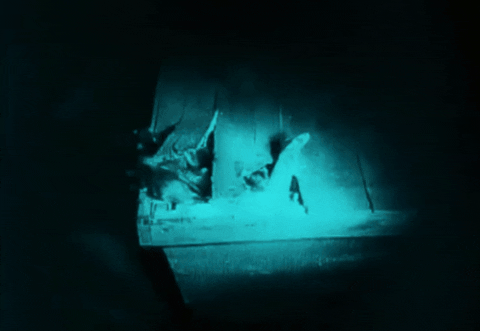


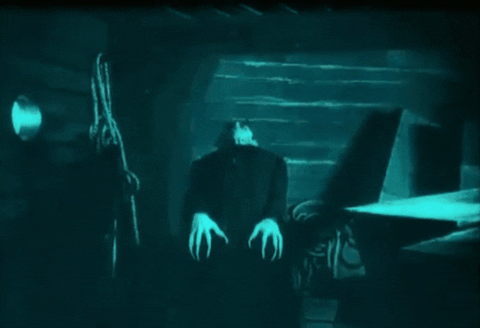

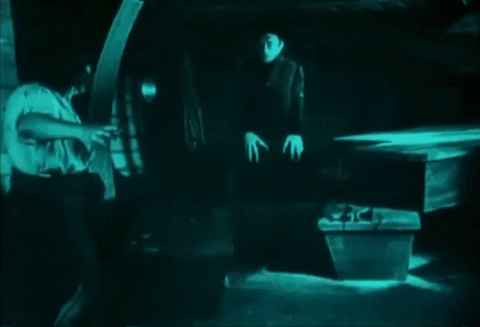
𝔑𝔬𝔰𝔣𝔢𝔯𝔞𝔱𝔲 (յգշշ) 𝔇𝔦𝔯. 𝔉. 𝔚. 𝔐𝔲𝔯𝔫𝔞𝔲
#Nosferatu Eine Symphonie des Grauens#Nosferatu#Post war#1922#20's#20s#expressionist film#silent film#Max Schreck#Count Orlok#Nosferatu (1922)#classic movies#movies#silent German Expressionist#horror movies#my gif#gifs#my edit#gif
104 notes
·
View notes
Text
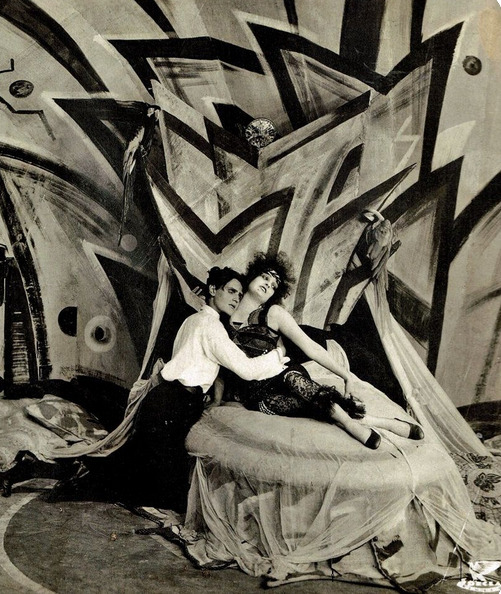
GENUINE (Robert Wiene, 1920)
Wiene's follow-up to The Cabinet of Dr. Caligari.
#Cabinet of Dr. Caligari#das cabinet des dr. caligari#the cabinet of doctor caligari#german expressionism#expressionism#expressionist cinema#film#films#movies#cinema#kino#horror#horror movies#horror films#1920s cinema#1920s film#1920s movies#1920s aesthetic#1920s art#1920s style#robert wiene#the cabinet of dr. caligari#silent films#silent cinema#silent movies#silent era
251 notes
·
View notes
Text



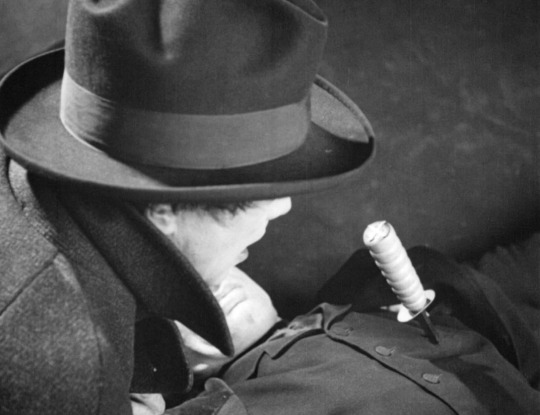


Watching 1 horror movie everyday in October 27/31
The Hands of Orlac (1924), dir. Robert Wiene
#film#horror film#horror films#horror movies#cinema#german cinema#german film#german expressionist#german expressionist films#the hands of orlac#robert wiene#conrad veidt#paul orlac#the hands of orlac 1924#20s film#vintage horror#vintage films#expressionist horror#black and white film#31 horror films#german expressionism
39 notes
·
View notes
Text
On November 4, 1928, The Man Who Laughs debuted in Canada and Sweden.
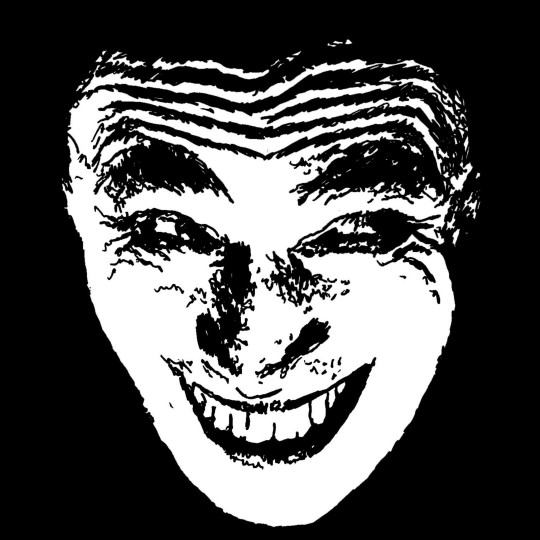
#the man who laughs#paul leni#victor hugo#conrad veidt#romantic drama#melodrama#gothic film#german expressionism#german film#national film registry#german expressionist film#horror art#horror#horror movies#movie art#art#drawing#movie history#pop art#modern art#pop surrealism#cult movies#portrait#cult film
9 notes
·
View notes
Photo

As many of you probably know, I am a huge fan of silent films. I could not just pass on this magnificent 4k version of one of the most iconic horror films of the silent era, The Cabinet of Dr. Caligari. The film turned 100 years old in 2020, can you believe it? I feel beyond grateful that we still get to enjoy this masterpiece of German Expressionist cinema today! This version includes a small booklet with facts about the film, behind the scenes, how it was filmed, information on expressionist cinema, and so on. It's by far worth every penny. Courtesy of @cinemalibre.filmstore ❤️ . . . . . . #me #personal #film #films #horror #horrorfilm #movie #horrormovie #thecabinetofdrcaligari #dvd #4k #4kdvd #silentfilm #silentcinema #cinema #silentera #germany #german #expressionism #expressionist #expressionistart #expressionistcinema #robertwiene #cesare #wernerkrauss #conradveidt #lildagover #horrorfilms #horrorfan #horrorjunkie (at Athens, Greece) https://www.instagram.com/p/CpF25MWt6TU/?igshid=NGJjMDIxMWI=
#me#personal#film#films#horror#horrorfilm#movie#horrormovie#thecabinetofdrcaligari#dvd#4k#4kdvd#silentfilm#silentcinema#cinema#silentera#germany#german#expressionism#expressionist#expressionistart#expressionistcinema#robertwiene#cesare#wernerkrauss#conradveidt#lildagover#horrorfilms#horrorfan#horrorjunkie
4 notes
·
View notes
Text
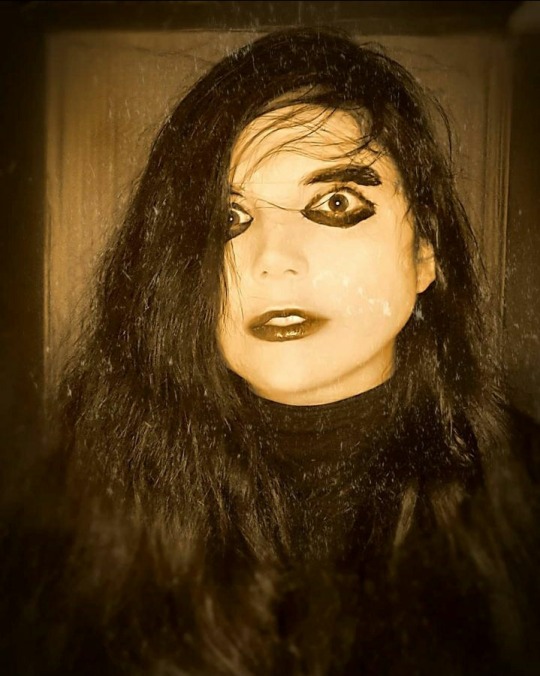
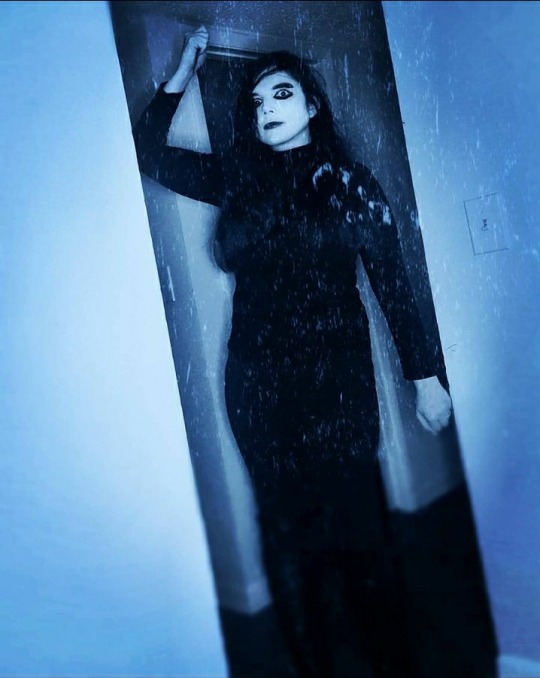
Throwback to the time I cosplayed femme!Cesaré from the Cabinet of Dr. Caligari 🖤
#cosplay#casual cosplay#horror#silent film#pretending my apartment is a German Expressionist setting#or am I?
1 note
·
View note
Photo
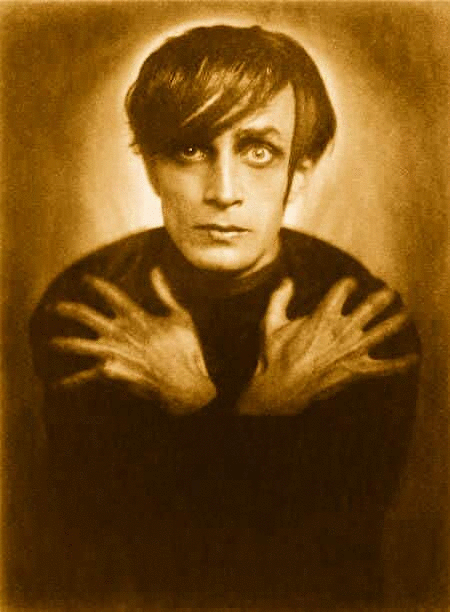
Conrad veidt...the cabinet of dr caligari...
0 notes
Text
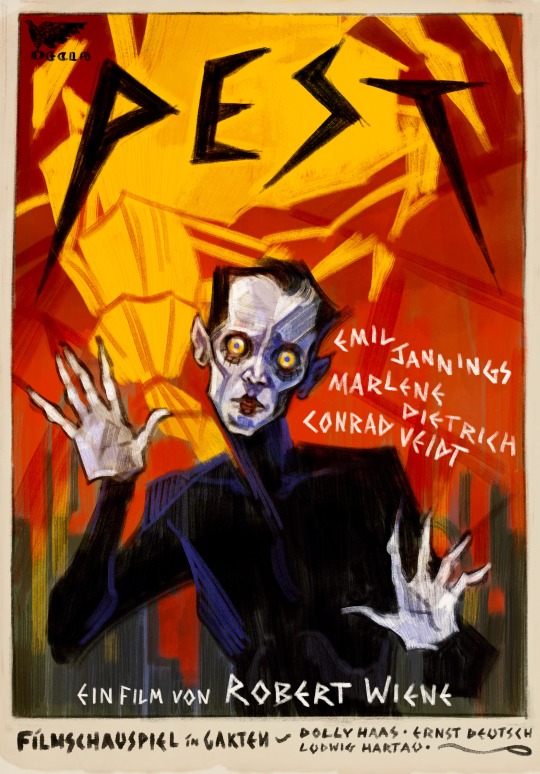
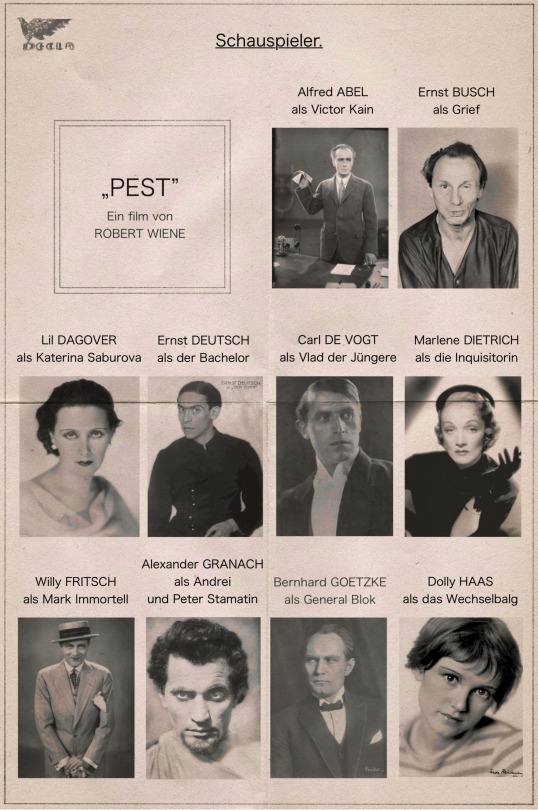

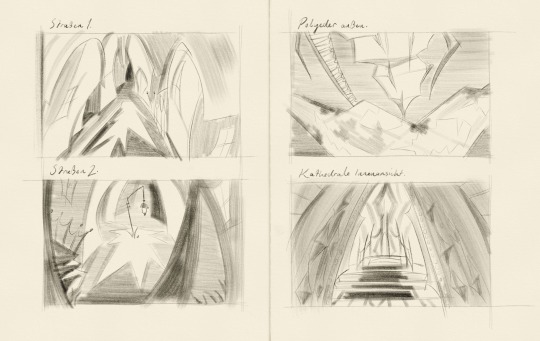

pathologic but it's a lost 1920s german expressionist film [id under cut]
[id:
image 1: a digital drawing of a fake poster, using bright colours and rough, painterly brushstrokes. the title, 'pest' (german for 'plague'), is written at the top in spiky black text. in the foreground a man dressed as a tragedian is staring intently at the viewer, his hands raised and splayed as if in horror. in the background, the town is framed against a red sky, with the polyhedron in yellow behind.
images 2 and 3: fake casting sheets for the film, with the names of the actors and the characters they are playing above a black-and-white portrait photograph of them. all the text is in german. in english it reads:
'Pest', a film by Robert Wiene
Alfred Abel as Victor Kain
Ernst Busch as Grief
Lil Dagover as Katerina Saburova
Ernst Deutsch as the Bachelor
Carl de Vogt as Vlad the Younger
Marlene Dietrich as the Inquisitor
Willy Fritsch as Mark Immortell
Alexander Granach as Andrey and Peter Stamatin
Bernhard Goetzke as General Block
Dolly Haas as the Changeling
Ludwig Hartau as the Haruspex
Brigitte Helm as Anna Angel
Brigitte Horney as Maria Kaina
Emil Jannings as Big Vlad
Gerda Maurus as Yulia Lyuricheva
Lothar Menhert as Georgiy Kain
Asta Nielsen as Lara Ravel
Ossi Oswalda as Eva Yan
Fritz Rasp as Stanislas Rubin
Conrad Veidt as Alexander Saburov and Tragedian
Paul Wegener as Oyun
Gertrud Welcker as Aspity
image 4: four digital sketches of set designs for various locations. all are strongly influenced by expressionist imagery, using extreme angles, warped perspective, and dramatic shapes. they are labelled 'street 1' (a street lined with houses), 'street 2' (a square with a lamppost and a set of steps), 'polyhedron exterior' (the polyhedron walkway), and 'cathedral interior' (the dais at the far end of the cathedral).
image 5: four digital drawings in a black-and-white watercolour style, showing fake stills from the film. all are similarly distorted and lit by dramatic lighting. the first shows katerina's bedroom, with katerina standing in the centre of the floor. the second shows the interior of an infected house. the third shows daniil staring out of the frame in horror, one hand on his head and the other raised as if to ward something off. the fourth shows an intertitle with jagged white text reading 'the first day' against a dark background.
end id.]
#pathologic#artwork#conrad veidt#(i know there are many other actors but i dont have tags for them my bad)#anyway :D this has been my brain project for the past week or so i have been thinking about it so much#i have so many more things i want to draw for it but i am trying to hold myself back. for the sake of my Wrists#also obviously the cast list is way whiter than it should be for pathologic but german expressionist cinema was not particularly diverse an#i was trying to go for realism so apologies for that#i had so much fun with these i dont normally draw locations because i prefer drawing people but i found it so much more enjoyable#when i could mess around with the perspective and make stuff look wacky. thank you expressionism i love you expressionism#also it goes without saying that i was most heavily inspired by the cabinet of dr caligari (which is why i went with robert wiene. he would#do such a great job i think)#i hope you are all well my friends :D kiss you
501 notes
·
View notes
Text


Propaganda
Brigitte Helm (Metropolis)—Brigitte is the goddess of Metropolis and she deserves to win this poll. She is absolutely stunning, and was a pioneer of silent film. In Metropolis she plays both the good-hearted heroine Maria and the evil robotic clone trying to tear it all down, and she carries both roles off perfectly. SHE HAS THE RANGE, DARLING.
Lyda Borelli (Satan's Rhapsody, Love Everlasting)— no propaganda submitted
This is round 1 of the tournament. All other polls in this bracket can be found here. Please reblog with further support of your beloved hot sexy vintage woman.
[additional propaganda submitted under the cut.]
Brigitte Helm propaganda:
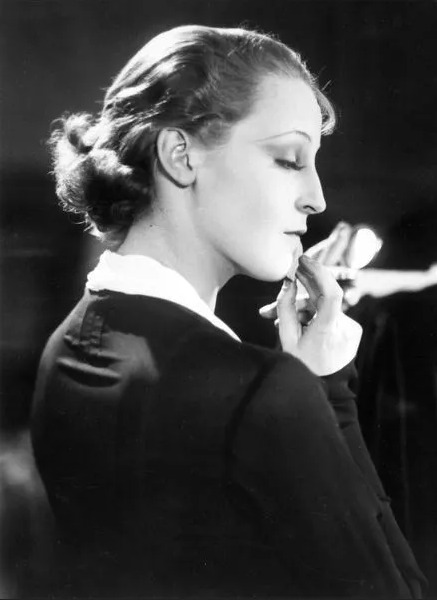
in the movie metropolis (1927) she plays an evil cyborg *and* a communist. The evil cyborg is hot in a deranged way and the communist is just very pretty.
just rewatched metropolis with my dad and the scene where she (as the brand new mechanical woman) is being revealed to the upperclass men??? all those men are the horniest theyve ever been in their lives and its Palpable. also just every time she looks at the camera its like that thing of eyes in a painting following you around a room, she has such a heavy gaze it feels like shes judging you from outside time and space and i know some of the tumblr girlies would really go for that if they knew about her
[Link: the above referenced Metropolis clip. tw for some unsavory slave imagery, eyeball horror, freaky statues, death references—general just be careful warning]
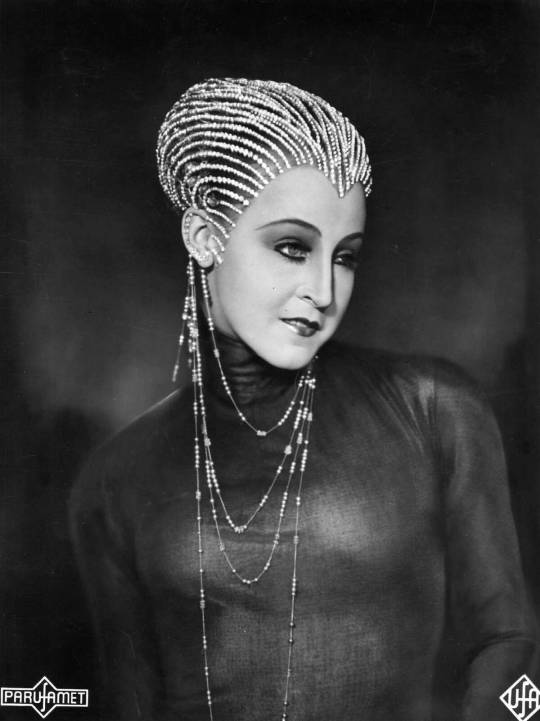
She got to play the most beautiful robot in all of cinema. That's got to count for something.
THEE femme fatale of German Expressionist film. Her double performance as sweet and innocent Maria and her evil robot doppelganger in Metropolis is fantastic.



155 notes
·
View notes
Text
Dan and Phil, The Blair Witch Project, and taking back agency.
In their latest video, «DanAndPhilCRAFTS - Slime» Dan and Phil have made a very clear homage to the 1999 found footage film «The Blair Witch Project» directed by Daniel Myrick and Eduardo Sanchez. The movie tells a story about a group of students, who travel to a small town in order to film a documentary about a local legend. In the process of filming, however, they get lost in the woods and never make it out of there, being haunted and then presumably killed by the witch. In this essay I am going to analyze how the visual narrative is structured in both films in relation to one another, the way «Slime» differs from «Blair Witch» and how that difference conveys the shift in Dan and Phil’s public presence.
Let's start with imagery associated with the paranormal in both films. In Blair Witch one of the signs of the witch's presence become the "dolls" made out of sticks. They are filmed by the characters, who are naturally freaked out by the dolls appearing seemingly out of thin air, signaling the presence of the dangerous and inhuman Other.


Dolls are also used in Dan and Phil's video, the main difference being that the pair are not haunted by the paranormal and unexplainable Other, no, they willingly put the dolls there, they are taking active steps in bringing about their own doom.
While in «Blair Witch» the dolls are placed ominously in between tree branches, filmed from below to make them look like they’re floating above the camera, being forces of a power that the characters ought to be afraid of, in «Slime» the dolls are nailed to a steady surface at camera-level, and while they do provide an unnerving atmosphere, they are not a danger to the characters, at least not a danger they’re not aware of.
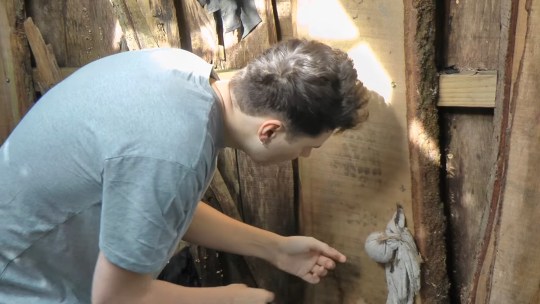

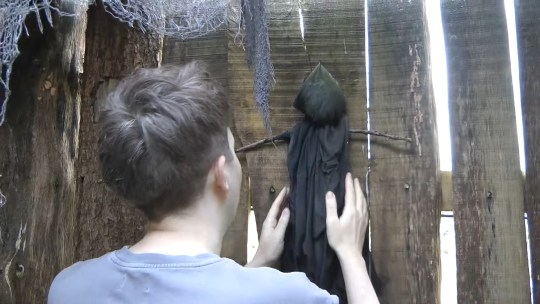
The same can be said for other "occult" imagery and artifacts. While in «Blair Witch» the characters finding strange symbols and even bloody remains in the forest strengthens the tension and suspense, signaling the close presence of the witch, in «Slime» all of the unnerving, "occult" and "satanic" exists under the characters' control. Dan draws the symbol on the wall himself, the animal skulls are presumably also brought in by the characters. Instead of being signs of danger, uncontrollable, they are merely tools in the hands of the pair.



The interior of the shack where the students meet their end in the 1999 film is filthy and decaying, which only strengthens the fear within the characters and us as the audience. It is filmed using close up shots which show the shack in it's decrepit and unnerving state. The shack that Dan and Phil's video is filmed in also seems abandoned from the interior, it is broken down, dark and dusty. However, instead of being mortified, like the characters of «Blair Witch», they occupy the space quite comfortably. Instead of being haunted by the building, they become the ones who haunt it, once again taking back control of their own demise. The interior is filmed at strange angles, almost reminiscent of German Expressionist films, in which the odd angles conveyed the detachment from reality and perpetual insanity, which in Dan and Phil's case could be used to depict the pair's descent into madness which leads them to their ritual.

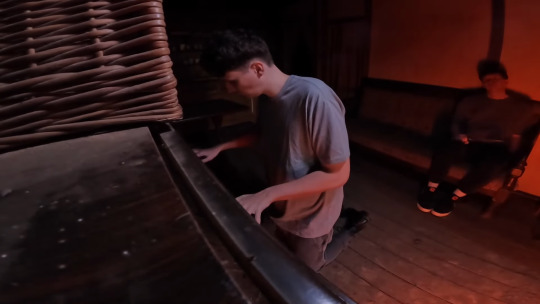
Nature plays a crucial role in «Blair Witch» as the witch herself is never shown. The characters are "surrounded" by the unnerving dark trees, which presumably hide the horror that is never allowed to be seen directly.
Dan and Phil make an obvious homage to that with their shots of the trees, however there is a major difference. While the shot is still desaturated and somewhat unnerving, the flowers on the tree are in bloom, symbolizing a new beginning and the hope that comes with it. The new "life" that is going to happen after the pair summons Baphomet.


In «Blair Witch» Heather's final message is a long shot filled with pure fear and desperation. Dan and Phil's shot mimicking it is almost unnecessary as it lasts only a few seconds, however in those few moments it manages to showcase the pair as a unit, they are calm and in the process of their ritual, determined to bring it to fruition. While Heather is left alone in the dark forest in which she will die, Dan and Phil are not alone: they are in this together, they are a team. If they die, it's because they chose to do so. "Creativity is nothing without friendship".


Now for the infamous "Blair Witching it in the corner". In this memorable scene from the 1999 film one of the students is stood in the corner facing the wall. Heather and the audience both know that, according to the Blair witch mythology, this position is a prelude to being killed, as that is how the murderer, who was persuaded by the witch, used to place his victims, for he couldn't bear to look them in the eyes. This face-to-the-wall position conveys pure helplessness at the hands of the persecutor. In «Slime» there is a scene that makes an obvious homage to the «Blair Witch» scene: Phil is stood in a dark corner of a room, the shot is in black and white. There is, however, a stark difference: Phil is facing the camera. With just this one change the scene no longer feels like a display of helplessness. Phil is looking straight at us, he is not a victim at the hands of unknown horrors, he is in control.


The way the "monster" is presented in both films differs significantly. A big part of the horror in «Blair Witch» is our inability to ever see the witch herself. The "monster" not being shown to the camera is a trope as old as low-budget horror: it helps build suspense and also hides the lack of budget. In «Blair Witch» the rapid movement of the camera also makes it feel like the horror is too great for a human mind to comprehend, too great to be caught on camera, Lovecraftian in nature.
The 1999 movie starts with the characters interviewing Blair locals, who tell the characters and us, the audience, the legend of the Blair witch. The witch was sentenced to death for practicing witchcraft, so she haunts those who try to disturb her peace. Here we can make the connection between those persecuted for "practicing witchcraft" aka being Other with being queer and being othered and, historically, persecuted for it.
This interpretation correlates well with the fact that the "monster", in this case the devil Baphomet, is present in «Slime». More than that, Dan and Phil actively seek him out. In the final scene of the short film, Baphomet has his arms around the pair, claiming them. The characters are willingly allying themselves with the Other. Dan and Phil see the "monster" and yet they do not run away, instead, they worship him. In the theme of reclaiming your agency, this could symbolize coming out, proudly and purposefully becoming part of the Other.
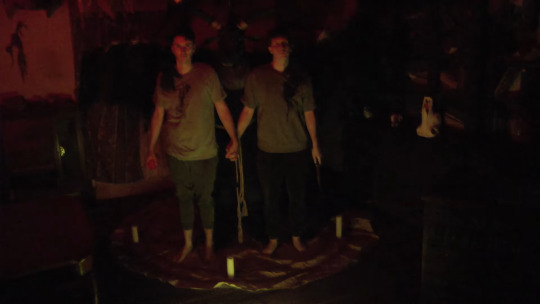
They are doomed from the start, but they are not helpless victims of the Other, scary and unknown, they are the ones bringing about their own doom. This is taking your agency back, and I feel like this narrative rhymes really well with Dan and Phil's current presence on the internet. While the early years of their careers were filled with public speculation and being stripped of their agency, something that "was just theirs" being scrutinized by the public, which definitely affected the way they had to behave, their current self-described "chaos era" is very different. They no longer make the effort to pretend to be anything they're not. They are the ones in control of the narrative, keeping their private life private, while also sharing way more openly and freely, knowing that we know and not really caring about the public's perception, as post coming out they have taken the power and agency back into their own hands.
#i cracked and wrote my own analysis#putting this under the cut cuz its long BUT IT HAS PICTURES PLEASE LOOK#sorryy if some phrasing is wonky or awkward haha i can't always tell what doesn't sound natural in english#there were a few more shots that were direct homages to specific blair witch shots but they dont differ much and idk what to say about thos#the beauty of experimental cinema specifically is how it can only mean as much as the viewer is willing to put into it#so by overanalyzing and creating our own meaning we're entering a dialogue with the film#we're a bunch of sick freaks who write essays for the love of the game huh#dan and phil#phan#<- for the bit
114 notes
·
View notes
Text
This part in emesis blue ⬇️ at the end

Is a reference to the cabinet of dr caligari, a VERY old German expressionist horror film ⬇️
Specifically the bit about Cesare the somnambulist who sleeps eternally in a coffin, sleepwalks and kills someone (sort of)

And I am going exceedingly insane about it. the IMPLICATIONS OF THIS.
#emesis blue#emesis blue medic#tf2#tf2 medic#the cabinet of dr. caligari#the cabinet of doctor caligari#cesare the somnambulist#unintelligible goblin noises
120 notes
·
View notes
Text

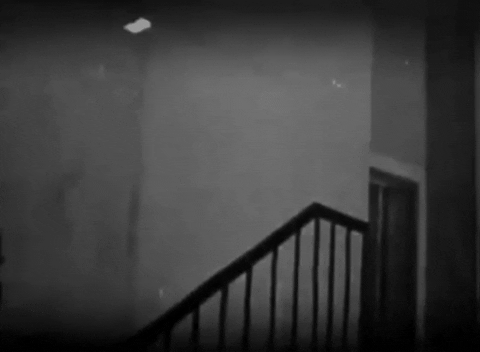


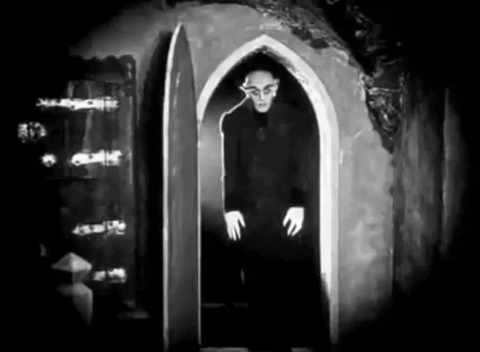


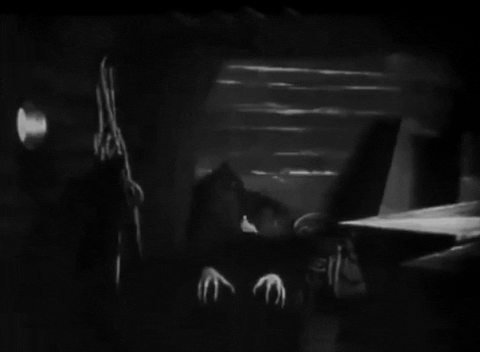
𝔑𝔬𝔰𝔣𝔢𝔯𝔞𝔱𝔲 (յգշշ) 𝔇𝔦𝔯. 𝔉. 𝔚. 𝔐𝔲𝔯𝔫𝔞𝔲
#Nosferatu Eine Symphonie des Grauens#Nosferatu#Post war#1922#20's#20s#expressionist film#silent film#Max Schreck#Count Orlok#Nosferatu (1922)#classic movies#movies#silent German Expressionist#horror movies#my gif#gifs#my edit#gif
60 notes
·
View notes
Text
The Future Is Noir
Scenography for the darkness with the uncertain future. Architecture of fear in the cinema of 1920s.

Considered the quintessential work of German expressionist cinema, the Cabinet of Dr. Caligari (1920) by Robert Wiene tells the story of an insane hypnotist who uses a brainwashed somnambulist to commit murders.
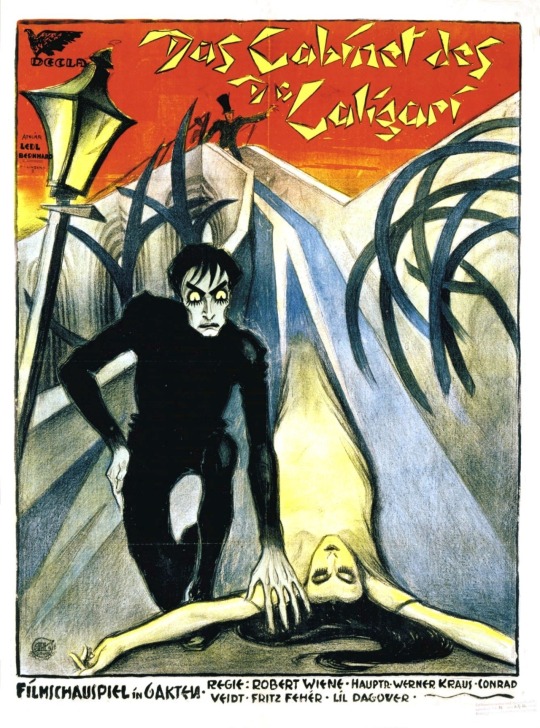
youtube
The film thematizes brutal and irrational authority. Caligari can be representing the German war government, with the symbolic of the common man conditioned to kill. The film include the destabilized contrast between the subjective perception of reality, and the duality of human nature.

An unofficial adaptation of Bram Stoker's 1897 novel Dracula in film is the German version of Nosferatu: A Symphony of Horror (1922) by F. W. Murnau. Nosferatu is an archaic Romanian word Nesuferitu` meaning the offensive or the insufferable one. The movie is actually about the First World War and the plague is a metaphor for the mass death and destruction of the war.

youtube
Nosferatu was banned in Sweden due to excessive horror until 1972. All known prints and negatives were destroyed under the terms of settlement of a lawsuit by Bram Stoker's widow.

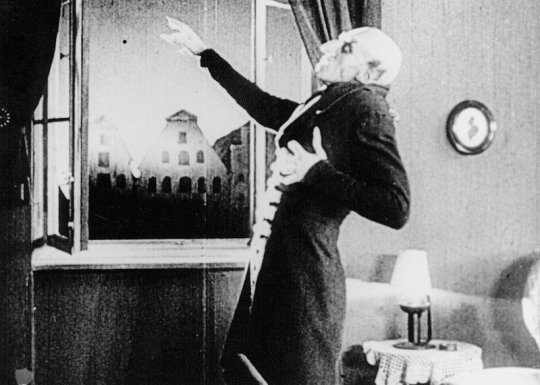
Berlin – Die Sinfonie der Großstadt (1927) is an experimental documentary by Walther Ruttmann. It begins with a drive of a high-speed train pulled by a steam locomotive through meadows, arbor and residential areas into the city and thus delimits the surrounding area from the big city.

The train arrives at Anhalter Bahnhof near the city center, where streets empty in the morning are filling up with people on their way to work. The rhythm of the city is getting faster and faster. With the 12 o'clock bell strike, the speed collapses. After lunch break and food intake, however, it begins to accelerate again in the afternoon.
youtube

Cabiria (1914), an Italian epic silent film by Giovanni Pastrone, was shot in Turin. The film is set in ancient Sicily, Carthage, and Cirta during the period of the Second Punic War (218–202 BC).

It follows a melodramatic main plot about an abducted little girl, Cabiria, and features an eruption of Mount Etna, heinous religious rituals in Carthage, the alpine trek of Hannibal, Archimedes' defeat of the Roman fleet at the Siege of Syracuse and Scipio maneuvering in North Africa.
youtube

One the most influential films in cinema history, Dziga Vertov's exhilarating ode to Bolshevik Russia the Man with a Movie Camera (1929). It is a visual argument for the place of the documentary filmmaker as a worker, educator, and eyewitness in a proletariat society. The film is an impressionistic view of urban daily life, seen from a purely cinematic perspective.

youtube


76 notes
·
View notes
Text

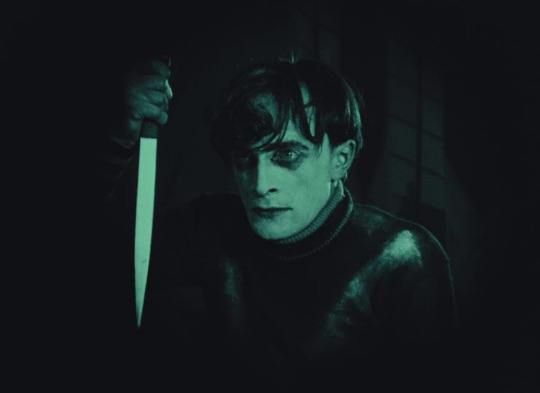


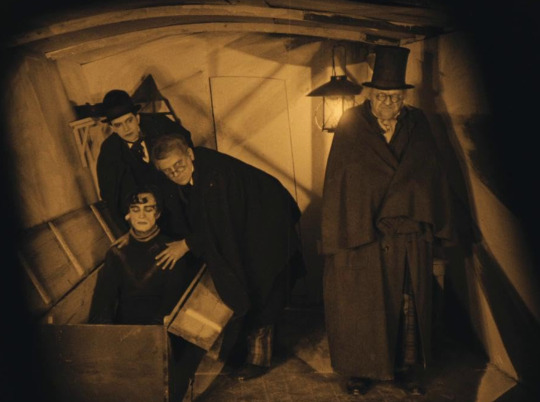

Watching 1 horror movie everyday in October 28/31
The Cabinet of Dr. Caligari (1920), dir. Robert Wiene
#film#horror film#horror films#horror movies#cinema#german film#german cinema#german expressionism#german expressionist#german expressionist film#the cabinet of dr. caligari#the cabinet of doctor caligari#das cabinet des dr. caligari#20s film#20s horror#vintage horror#expressionist horror#silent films#conrad veidt#robert wiene
36 notes
·
View notes
Text
On August 10, 2022, M debuted on Polish television.
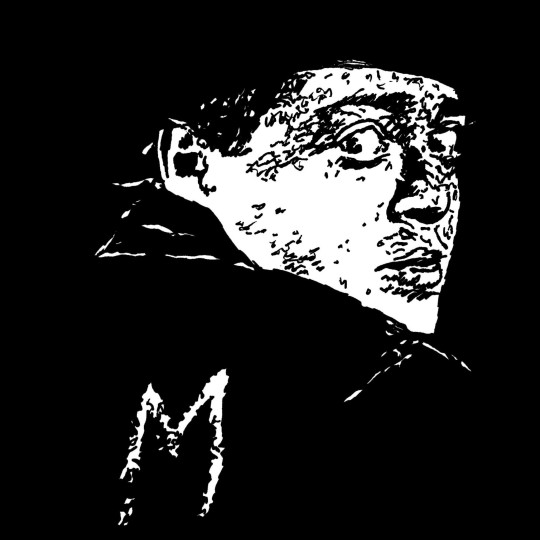
#m#m 1931#fritz lang#peter lorre#german expressionist film#german fi#german cinema#crime thriller#crime film#crime movies#1930s#30s film#classic film#classic horror#movie art#art#drawing#movie history#pop art#modern art#pop surrealism#cult movies#portrait#cult film
15 notes
·
View notes
Text
Rewind the Tape —Episode 4
Art of the episode
Just like we did for the pilot and for episodes two and three, we took note of the art shown and mentioned in the fourth episode while we rewatched it. Did we miss any? Can you help us put a name to the unidentified ones? Do you have any thoughts about how these references could be interpreted?


Bust of a Woman with Her Left Hand on Her Chin
Edgar Degas, 1898 [Identified by @terrifique.]
Degas, whose work already appeared in the second episode, was a French painter of the 19th to early 20th century. His impressionist paintings often depicted ballet dancers, racehorses, and human portraits of isolation.
Krumau on the Molde, Kneeling Girl with Spanish Skirt and Self portrait in a jerkin with right elbow raised
Egon Schiele, 1912, 1911 and 1914
Schiele, whose work we have also been seeing around Rue Royale since the pilot, was an Austrian Expressionist painter, very prolific despite passing before turning 30. His work is recognizable for its transgressive portrayal of the nude body, including his nude self-portraits; but his later oeuvre features many landscapes.

The Kitten's Art Lesson
Henriette Ronner Knip, 1821-1909 [Identified by @terrifique.]
Knip was a Dutch-Belgian romantic style artist best known for paintings of animals, particularly cats and dogs of a playful nature. See more of her work here.

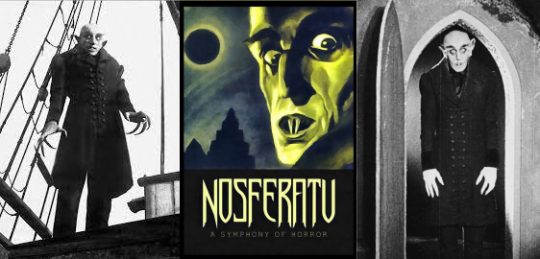
Nosferatu
F.W. Murnau, 1922
Nosferatu is a silent expressionist horror film from the legendary German director F.W. Murnau. It is an unauthorized adaptation of Bram Stoker's Dracula. While not a commercial success upon release in 1922, film historians now consider it an influential and revolutionary film in the horror genre. Since it has been in the public domain since 2019 in the U.S., it is now free to stream on YouTube.
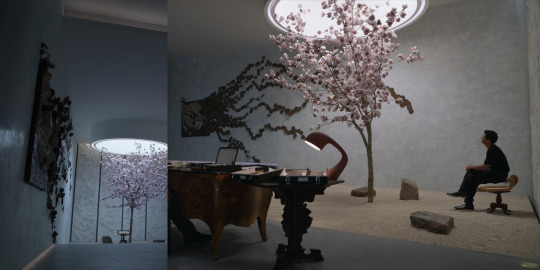
Untitled piece
Sadie Sheldon, undated [Identified by @lanepryce.]

The incredible metalwork piece on the wall of the reading room was made by a New Orleans-based artist, for New Orleans... pizzeria! It was made for Pizza Delicious, using dozens of tin cans. Sheldon describes her work as "site and time-specific projects from found materials (...) related to adaptability, renewal, and appreciating the objects of our everyday life".

New York
George Bellows, 1911 [Identified by @nicodelenfent, here.]
Several of Bellows' pieces have been featured in previous episodes. He was an American realist painter, known for his bold depictions of urban life in NYC. His work "revolutionized the conventions of the traditional American urban vista and surpassed the efforts of other contemporary urban realists" [x].
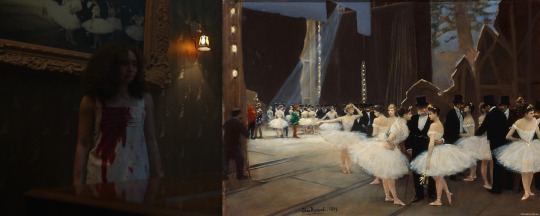
Backstage at the Opera
Jean Beraurd, 1889
Beraurd was a Russian born French painter known for his depictions of Parisian life and society during the Belle Epoque. [Identified by @nicodelenfent.]
Unidentified works
In Claudia's room: above the Knip we can see a painting of what looks like four people, maybe women sitting at a balcony. To the left of the door we can see, on top, a floral bouquet over a dark background, and below that, an illustration or painting of a woman with flowers over a bright pink background.
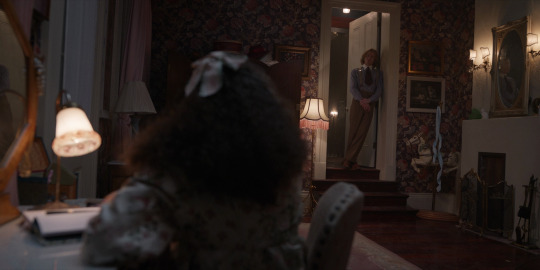
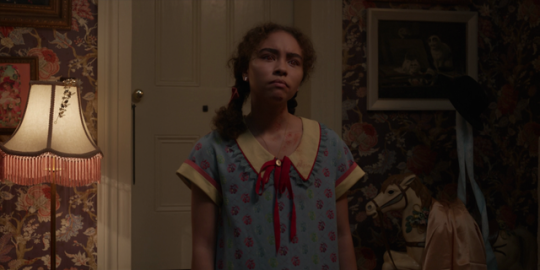
You can see all unidentified works from the first season in this post. If you spot or put a name to any other references, let us know if you'd like us to add them with credit to the post!
Starting tomorrow, we will be rewatching and discussing Episode 5, A Vile Hunger for your Hammering Heart. We can't wait to hear your thoughts!
And, if you're just getting caught up, learn all about our group rewatch here ►
#the vampire claudia#claudia iwtv#louis de pointe du lac#daniel molloy#lestat de lioncourt#vampterview#interview with the vampire#iwtv#amc interview with the vampire#interview with the vampire amc#amc iwtv#iwtv amc#IWTVfanevents#rewind the tape#analysis and meta#art of the episode#the ruthless pursuit of blood with all a child's demanding
31 notes
·
View notes